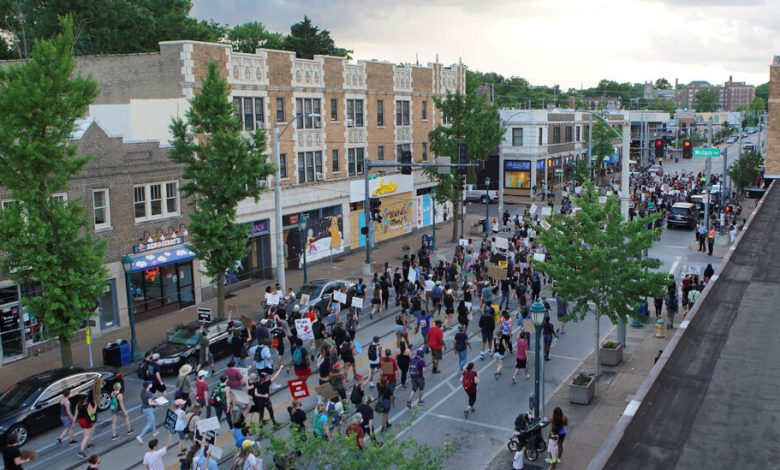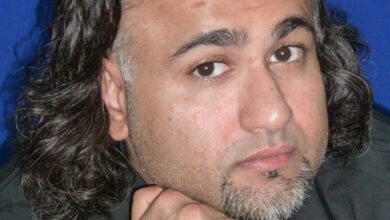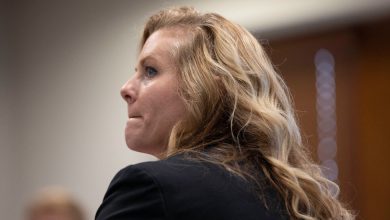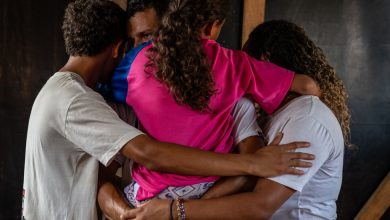Teddy Bears and Racial Justice: How St. Louis Became a Laboratory for Social Work

ST. LOUIS — It’s called the Delmar Divide, named for the once-grand boulevard that bisects this city into enclaves that have long been more starkly segregated than almost anywhere else in America.
North of Delmar Boulevard lies an expanse of low-income, predominantly Black neighborhoods whose struggles with violence have given St. Louis its reputation as one of the perennial murder capitals of America, alongside more diverse, middle-class outposts like University City that have produced Black celebrities including the rapper Nelly and the basketball stars Jayson Tatum and Bradley Beal. In some especially troubled areas, repossessed homes can be picked up for as little as $1.
In wealthier, mostly white areas just south of Delmar, stately Gilded Age mansions listed in the millions of dollars line privately managed, manicured streets that contrast sharply with the dilapidated rowhouses mere blocks away.
It was just off Delmar Boulevard, in a gated neighborhood within Central West End, that one of the most revealing episodes of the 2020 protest movement for racial justice took place.
At the height of the nationwide anger over George Floyd’s murder by a white police officer, Black Lives Matter supporters streamed past the Renaissance palazzo-style home of Mark and Patricia McCloskey, a white couple who brandished firearms at the demonstrators. (After pleading guilty to misdemeanor charges over the confrontation, they were pardoned by Missouri’s governor.)
An image of the McCloskeys became a symbol of the conservative backlash to the protests for racial justice. Mark McCloskey later made a failed run for Missouri’s open Senate seat.
St. Louis is also undergoing political and social change: Tishaura Jones, the first Black woman to be elected mayor, took office in April 2021.
Jones has allied herself with a new progressive majority on the board of aldermen and with Cori Bush, who represents the city in Congress and is close to the so-called Squad in Washington.
The rise of this left-leaning governing coalition has led to grumbling within the mainly white old guard of the local Democratic Party establishment, who see the newcomers as interlopers who don’t understand what the city needs to thrive economically.
But it has also injected fresh momentum into efforts to address the legacy of what Sylvester Brown Jr., who was a longtime columnist for The St. Louis Post-Dispatch, calls “Uncle Ray”: the indelible legacy of race and racism.
A laboratory for urban innovation
The population within the urban boundaries of St. Louis has shrunk from 857,000 at its peak in 1950 to about a third of that today.
But for St. Louis, unlike many postindustrial American cities, a key problem now is not gentrification so much as Black flight: Black residents are leaving for more spacious homes, lower crime, jobs and better services in the middle-class suburbs. The city’s Black population has declined by nearly 17,000 people since 2010, while the white population ticked up by nearly 1,000.
That exodus has, paradoxically, led to an explosion of activism on housing, criminal justice and racial equity. Taken together, St. Louis, and the area around Delmar Boulevard in particular, is at once a familiar zone of urban inequality and an utterly unfamiliar laboratory for innovation.
With all that have come tensions over just whom, exactly, all this activity is for: Is it the Black residents whose incomes have been halved, in real terms, since the 1980s? Or is it the mainly white hipsters who have begun tiptoeing back into the neighborhood?
One thing all can agree on: There simply isn’t enough public and private money attacking the problem.
Sean Joe, a professor at the Brown School of Social Work at Washington University in St. Louis, has tried to calculate the size of the investment gap, which he estimates at about $200 million. “We know how to do this,” he said. “We just need to decide if we want to do this.”
Turning right instead of left
One of the people working on fixing North St. Louis is Shawntelle Fisher, who spent 15 years in and out of prison before deciding that she needed to change.
“I just got sick of myself,” she reflected. A math whiz who initially trained as an accountant, she collected a fistful of degrees and became an activist who connects former inmates with job training and opportunities.
When we met, Fisher was putting the final touches on a new office for her nonprofit organization, the SoulFisher Ministries, housed in a once-derelict former city hospital that now smells of fresh paint. There was hardly any furniture yet, save for the computer workstations that the men her group tries to help — most of them Black — will be able to use.
The refurbished hospital, which was originally built in 1904, has been reinvented as a hub of activity for groups like Fisher’s.
Named Delmar Divine, it is the brainchild of Maxine Clark, a former executive at the May Company and a co-founder of the Build-a-Bear Workshop. She and her husband, Bob Fox, run a private foundation focused on economic opportunity and criminal justice reform.
In 2017, the foundation bought the abandoned hospital and, over the course of a decade and about $90 million in total investment (roughly a fifth from the couple), helped build it into what it is becoming today.
The facility is expected to house nearly 1,000 nonprofit workers, who will have access to executive training programs, meeting space and other resources. And a residential wing will house hundreds of families of different races and income levels, some paying below-market rates.
Clark and Fox, an older white Jewish couple, were driven to pursue the project in part by the unrest in Ferguson, a town outside St. Louis, in 2014 and 2015. They became convinced that Black neighborhoods need money at a scale that more often goes to megaprojects like Ballpark Village, a $260 million real estate investment area around Busch Stadium.
But for Clark, Delmar Divine has also become a passion project.
“One day, I took a friend’s advice and decided to turn right on my way home instead of left” when commuting toward her home in Clayton, an upscale suburb, she said. “It changed my life.”
‘This community needs a hug’
A mile west down the boulevard from Delmar Divine is an area called the Loop that, at first glance, looks much like other gentrifying neighborhoods across America: record shops, hip concert venues, fancy brunch joints.
The Loop’s revival owes its character to one man: Joe Edwards, a real estate developer known for his collection of antique memorabilia and the thousands of photographs he has taken with celebrities and plastered on the walls of his jazz bar, Blueberry Hill.
His latest obsession is the Loop Trolley, a project that has become a running joke in St. Louis.
Like all of his enthusiasms, it’s powered by nostalgia for an era when downtown residents took streetcars to shop in what was a diverse, almost cosmopolitan neighborhood until roughly 1955, when the Supreme Court ruled that segregated public schools were unconstitutional — driving many white residents into the suburbs.
But the trolley project has been plagued by mechanical problems and by complaints that the streetcars, which are custom-built historical replicas manufactured in Iowa, will slow traffic. The federal government has complained of multiple blown deadlines and disappointing ticket sales, and has threatened that it might demand repayment of millions in grant money.
Asked about the project, Jones, the mayor, rolled her eyes.
Edwards stiffened when I ran the criticism past him. “Those same people,” he said, never “moan about a bus.”
But it would ultimately fall to Jones to figure out how to fill the $22 million hole the trolley would blow in the city’s budget if Washington makes good on its threats.
Jones, who grew up in North St. Louis, speaks often about redirecting what she calls “disinvestment” from other areas into Black neighborhoods — “I want to see cranes in the sky,” she said.
She must also balance the city’s surge of progressive energy with her jobs and economic development agenda, so her administration is weighing a property-tax freeze to mitigate the effects of gentrification. In one illustration of the challenge, a recently elected alderwoman has frozen all real estate projects in her district, insisting that all new projects must financially benefit neighborhood residents.
Jones bristled, however, when I pointed out that the mayor of St. Louis doesn’t have much formal authority, given how much sway aldermen hold over development projects.
“A mayor is only as powerful or weak as the person in that seat,” she said.
Joe Roddy, a former alderman who hails from a once-powerful political dynasty in St. Louis, said the ideology of new-guard politicians like Jones and Cori Bush was “delusional.” In his view, the city needs more economic development and jobs — period.
But Clark, for one, is unbowed.
Delmar Divine will be “transformative,” she said, by unleashing the creative energy of community leaders.
When I asked Clark what linked her business career — founding a chain of stores that let children design their own teddy bears — with her philanthropic work, she did not miss a beat: “This community needs a hug.”
What to read
-
Queen Elizabeth II of Britain has died at 96. She met 13 sitting United States Presidents, Peter Baker reports. Read Alan Cowell’s obituary and follow our live coverage. And here’s a screengrab of today’s home page.
-
The Justice Department asked a federal judge to revisit her decision to temporarily stop prosecutors from gaining access to classified documents seized from Donald Trump’s Florida home. Glenn Thrush, Alan Feuer and Charlie Savage have the details. And Trump’s post-2020 fund-raising is also coming under scrutiny by the Justice Department, Alan Feuer, Maggie Haberman and Adam Goldman report.
-
Stephen Bannon, a former top adviser to Trump, surrendered to the Manhattan district attorney’s office to face charges in what prosecutors have said was a crowdfunding fraud scheme.
Thank you for reading On Politics, and for being a subscriber to The New York Times. — Blake
Read past editions of the newsletter here.
If you’re enjoying what you’re reading, please consider recommending it to others. They can sign up here. Browse all of our subscriber-only newsletters here.
Have feedback? Ideas for coverage? We’d love to hear from you. Email us at [email protected].





